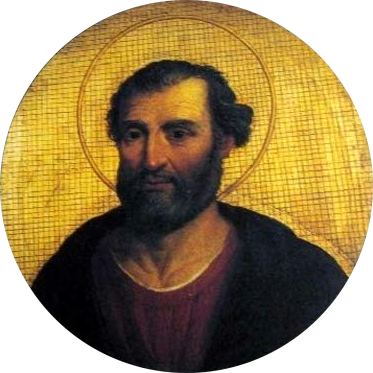Papacy began 10 August 654 Name Pope I Term ended June 2, 657 AD Feast day 2 June Posthumous style Saint | Birth name ??? Papacy ended 2 June 657 | |
 | ||
Similar People Pope Anastasius III, Pope Innocent XII, Pope Innocent VIII, Pope Clement XIII, Otto II - Holy Roman Emperor | ||
Pope Eugene IV | Wikipedia audio article
Pope Eugene I (d. 2 June 657), also known as Eugenius I, was Pope from 10 August 654 to his death in 657. He was a native of Rome, born to one Rufinianus.
Contents
- Pope Eugene IV Wikipedia audio article
- Pope Eugene III Wikipedia audio article
- Early life
- Election under unusual circumstances
- Reign
- Constantinople letter affair
- Later years
- References
Pope Eugene III | Wikipedia audio article
Early life
Little is known of Pope Eugene's early life other than that he was a Roman from the Aventine and was known for his holiness, gentleness, and charity. He had been a cleric from his youth and held various positions within the Church of Rome.
Election under unusual circumstances
On the banishment of Pope Martin I by Byzantine Emperor Constans II, he showed greater deference than his predecessor to the emperor's wishes and made no public stand against the Monothelitism of the patriarchs of Constantinople.
Martin I was carried off from Rome on 18 June 653 and was kept in exile until his death in September 655. Little is known about what happened in Rome after Pope Martin's departure, but it was typical in those days for the Holy See to be governed by the archpriest and archdeacon.
After a year and two months, a successor was found to Martin in Eugene.
Reign
Almost immediately after his election, Eugene was forced to deal with the heresy of Monothelitism, i.e., that Christ had only one will.
Constantinople letter affair
One of the first acts of the new pope was to send papal legates to Constantinople with letters to Emperor Constans II informing him of his election and professing his faith. The legates unfortunately allowed themselves to be deceived, or bribed, and brought back a synodical letter from Patriarch Peter of Constantinople (656–666), while the emperor's envoy, who accompanied them, brought offerings for St. Peter and a request from the emperor that the pope would enter into communion with the Patriarch of Constantinople. Peter's letter proved to be written in a difficult and obscure style and avoided making any specific declaration as to the number of "wills or operations" in Christ. When its contents were read to the clergy and people in the church of St. Mary Major in 656, they not only rejected the letter with indignation, but would not allow the pope to leave the basilica until he had promised that he would not on any account accept it.
So furious were the Byzantine officials at this harsh rejection of the wishes of their emperor and patriarch that they threatened to roast Eugene, just as they had roasted Pope Martin I. Eugene's persecution was averted by the ensuing conquest of the Muslims, who took Rhodes in 654 and defeated Constans himself in the naval battle of Phoenix (655).
Later years
It was almost certainly this pope who received the youthful St. Wilfrid on the occasion of his first visit to Rome (c. 654). At Rome he gained the affection of Archdeacon Boniface, a counsellor of the apostolic pope, who presented him to his master. Eugene "placed his blessed hand on the head of the youthful servant of God, prayed for him, and blessed him." Nothing more is known of Eugene except that he consecrated twenty-one bishops for different parts of the world, and that he was buried in St. Peter's Basilica.
He died in 657 and was acclaimed a saint, his day being the 2nd of June, although, according to Anastasius, he died on the 1st of that month.
